Oryuheon House [Korea Quality] / 오류헌 [한국관광 품질인증/Korea Quality]
11.0 Km 5 2023-04-13
18-15, Gireumaje-gil, Andong-si, Gyeongsangbuk-do
Oryuheon House, located near Imhaho Lake in Andong, Gyeongsangbuk-do, offers a chance to stay in a historic house from the Joseon period. The house, also known as Mogwa House, was built by Kim Won-jung, the third son of Sukjong-era rector of the National Academy Kim Bang-geol, when he formed a family of his own in 1678. It was designated as the National Folk Cultural Heritage No. 184. The door’s wooden frame and the open floor space exemplify the beauty of the literati house of the Joseon period, while the sarangchae (men’s quarters) and daemunchae (gate quarters) showcase the sophisticated architecture of the era. Anchae (women’s quarters) retains its original appearance, while the sarangchae was rebuilt in 1920. The construction of the Imha Dam in 1990 resulted in the house’s relocation to its present location.
The owner of the house resides in anchae and sarangchae. Guests have access to a space that includes a 2-kan room, which can accommodate up to 4, an open floor space, and a bathroom. Cooking is prohibited in the house, but guests can make use of a grill located on a small yard reserved for the guests. Korean-style breakfast, including menus like chicken porridge or lotus leaf rice, are offered free of charge in the morning. Nearby sights include the water sports activities in Imhaho Lake, Manhyujeong Pavilion, Hahoe Village, and Dosanseowon Confucian Academy.
Waryong Gisa Sikdang(와룡기사식당)
12.2 Km 45 2020-11-26
8 Taerigeumsan-ro Andong-si Gyeongsangbuk-do
+82-54-854-8980
It is a Korean restaurant with 20 years’ tradition. This Korean dishes restaurant is located in Andong-si, Gyeongsangbuk-do. The most famous menu is braised chicken.
An dong gotak Esanru [Korea Quality] / 안동고택 이상루 [한국관광 품질인증]
12.9 Km 14593 2020-09-10
3193-6, Pungsantaesa-ro Seohu-myeon, Andong-si, Gyeongsangbuk-do
+82-54-843-3328 / +82-10-3522-1542
'Andong City in Gyeongsangbuk-do Province is a town of culture and folk traditions where one can trace the long history of eminent families. It is also a symbol of time-honored tradition to the extent that the name Andong reminds people of traditional Korean hanok houses. Isangru, an ancient hanok house with a history of 2,590 years, located in the foothills of Mt. Cheondeungsan, served as a venue for the memorial rite for Kim Seon-pyeong, the progenitor of the Andong Kim clan and a meritorious government official during the reign of King Taejo of the Goryeo Dynasty. Isangru, meaning ‘a tall majestic building built on frosty ground’, is a two-story wooden building with a tiled roof characterized by elegant curves that form a half-hipped shape when viewed from the side. The house consists of two accommodations, Taejangtaesa and Isangru, arranged in a ‘ㅁ’ shape. The large door located in the middle of the ground floor offers an open view of the beautiful natural environment including a pine grove, a pond, and wild flowers. Built in 1750, this hanok house shows its age in its wooden pillars, stone walls, and interiors decorated with wooden engraving on the handrail. Guests can stay in a room heated with wood in winter, or in a tent for a different experience in summer. The house has been well maintained with various repair works, and underwent extensive renovations, including the wallpaper and floors, in 2013. Although it is close to a road, the house is surrounded by old trees, creating the impression that it is situated in the middle of a dense forest. A path runs between ancient pine trees on the road leading to the house. There is a pond with water lilies and white lotus flowers in front of the house, while various species of wild flowers including big blue lily turf, plantain lily, montane aster, and asters come into full bloom around the house in their respective seasons. Fully maintained by the Andong Kim clan, Isangru is a large structure that can accommodate many people and is used to hold clan assemblies. This tall building is also used as a venue for concerts, seminars and traditional hands-on experience programs for students, including tea ceremony, masked dance, natural dyeing, hanji (Korean paper) crafts, and filial duty education programs. The house also offers guests a traditional nobleman’s dining table including various wild vegetable dishes for breakfast. Isangru is popular among Korean and foreign guests who want to experience traditional Korean culture or enjoy a relaxing stay with their parents amid beautiful nature. In addition, it is located between Hahoe Folk Village and Dosanseowon Confucian Academy in Andong, and offers easy access to other nearby tourist attractions including Bongjeongsa Temple, which is the oldest wooden building in Korea and is just three minutes’ drive away, and the two-hour-long Dulegil Trail.
Andong Susan Sikdang (안동수산식당)
13.9 Km 61 2021-03-24
64, Yutongdanji-gil, Andong-si, Gyeongsangbuk-do
+82-54-859-9779
It is a store where you can enjoy fresh seafood. This Korean dishes restaurant is located in Andong-si, Gyeongsangbuk-do. The representative menu is cold raw fish soup.
Byeolcheongung (별천궁)
14.1 Km 51 2021-03-30
141, Bongjeongsa-gil, Andong-si, Gyeongsangbuk-do
+82-54-857-4168
It is a restaurant with a hanok interior. This restaurant's signature menu is set menu with grilled salted mackerel. This Korean dishes restaurant is located in Andong-si, Gyeongsangbuk-do.
Ecole des Bonnes Manières de Andong (안동예절학교)
14.2 Km 2513 2023-04-07
434, Gamae-ri, Waryong-myeon, Andong-si, Gyeongsangbuk-do
+82-54-841-0511
L'Ecole des Bonnes Manières de Andong, située dans la ville de Andong, est un haut lieu de la culture confucianiste en Corée. Elle permet de découvrir les bonnes manières du passé en Corée.
Vous pourrez aussi y apprendre l'étiquette lors de la cérémonie du thé et découvrir les mélodies traditionnelles à travers des instruments tels que le Janggu (tambour à double face) et le Gayageum (harpe coréenne à douze cordes) ainsi que découvrir les jeux folkloriques comme le Yut-nori et le cerf-volant. L'école propose un grand nombre de programmes: danse du masque, fabrication d'objets en papier traditionnel, cuisine traditionnelle, mariage traditionnel et rafting sur la rivière Nakdonggang.
Plusieurs sites touristiques se trouvent non loin de là comme l'école confucianiste Dosan Seowon, le musée des sciences sur la forêt et le centre littéraire Yi Yuk-sa.
Jukheon Traditional House[Korea Quality] / 죽헌고택 [한국관광 품질인증]
14.7 Km 513 2020-12-10
24, Taejangjukheon-gil, Seohu-myeon, Andong-si, Gyeongsangbuk-do
+82-10-5217-2174
Located near Bongjeongsa Temple in Andong, Gyeongbuk, the Historic House of Jukheon (Gyeongsangbuk-do Folk Cultural Heritage No. 146) was built in 1886 by renowned independence fighter Kim Ga-jin (1846-1922) and sold to Yi Hyeon-chan (courtesy name: Jukheon) in 1890. The house is now used as the shrine (Jaesa) of his family. It would be a great cultural experience for anybody to welcome the rising sun at a historic building such as this.
Meeting the sunrise from this historical heritage is sure to be the highlight of one’s trip. The house follows the square layout characteristic to the late Joseon period houses. The house itself is surrounded by old pine trees that add to the charm of the house.
Jukheon Traditional House has four Korean traditional rooms, namely the 2-person Jukheon Gallery, Study, Elisabeth Room and the 4-person Jukheon Dongnong Room. The house demonstrates the traditional beauty of Korean houses like the wooden platform hall built upon the stone foundations, screens, and roofs with exposed beam. The screens open to the view of the stone fence and the mountains far away. Elizabeth Room was constructed to commemorate the visit of Her Majesty Queen Elizabeth II of United Kingdom to UNESCO World Heritage site Bongjeongsa Temple in 1999. ‘Queen Elizabeth Road’ stretches from the Jukheon Traditional House to the Bongjeongsa Temple, allowing the guests to trace Her Majesty’s visit with their own steps. A mill with a thatched roof, located to the side of the complex, allows the guests to experience the traditional stepping mill. The pillar of the mill building is adorned with flags from all over the world, testifying to the many international visitors who have stayed at the house. Guests can also enjoy a free breakfast of toast, coffee, and other simple fare on the open hall of the building.
Seohae Sikdang (서해식당)
15.2 Km 101 2021-03-26
4248, Gyeongseo-ro, Andong-si, Gyeongsangbuk-do
+82-54-842-1644
This is a place where soy sauce-marinated blue crabs are made using domestic blue crabs. This Korean dishes restaurant is located in Andong-si, Gyeongsangbuk-do. The most famous menu is soy sauce marinated crab set menu.
Jeongjae Head House [Korea Quality] / 정재종택 [한국관광 품질인증]
15.5 Km 7775 2023-04-13
경상북도 안동시 임동면 경동로 2661-8
+82-10-8590-0625
Boasting more than 300 years of tradition, Jeongjae Traditional House is the head house of Ryu Chi-myeong (pen-name: Jeongjae), who inherited the study of Togye Yi Hwang (1501-1570), one of the two most prominent Korean Confucian scholars of Joseon. The old house features the characteristic construction elements of a Joseon hanok, including the stylobate, wooden pillars, toenmaru (the narrow wooden porch running along the outside of the building), tiled roof, and other structures, and commands an open view of Imha Lake. The house was originally built by Ryu Gwan-hyeon, the great-great-grandfather of Ryu Chi-myeong, in 1735 (the 11th year of the reign of King Yeongjo of Joseon) in the village of Handeul in Imdong-myeon, Andong-si, Gyeongsangbuk-do, but it was relocated to the foot of Guamsan Mountain in 1987 when Imha Dam was built and the surrounding area was submerged as a result. The house consists of the daemunchae (gate building), jeongchim (a ‘ㅁ’-shaped house with a tiled roof), haengnangchae (servants’ quarters), a shrine, and a pavilion. The sarangchae (men’s quarters) is clearly visible, while the anchae (women’s quarters) is concealed within the house. The sarangchae has a sarangmaru (wooden floor), a large sarangbang room, a small sarangbang room, and there is a small maru between the two rooms. The buildings of the sarangchae and anchae are clearly divided into segregated spaces for men and women according to Confucian tradition. The anchae has a daecheongmaru (large wooden floor) in the middle; a main room, kitchen, and toilet on the right; and a numaru (upper floor) and sangbang (upper room) on the left. The small side door of the main gate links to the door by which to enter the anchae, which has a small vegetable garden. Manujeong Pavilion (Gyeongsangbuk-do Cultural Heritage Material No. 37) is a half-hipped roof building with single-layered eaves located on the left side of the house outside the main gate. It is the place where Ryu Chi-myeong used to teach his students, and consists of a large maru and a guest room. The pavilion is also surrounded by the beautiful scenery of Imha Lake, mountains, and chestnut trees. Jeongjae Traditional House provides two special experience programs: Making Songhwaju, which is the Ryu family’s home-brewed liquor (15 to 18 degrees) made with rice, glutinous rice, yeast, pine needles, and chrysanthemums, led by the owner’s wife (Intangible Cultural Asset No. 20); and Making Tarak, which is a fermented milk drink that has been made by the Ryu’s family for some 500 years. As the recipe for making Tarak is relatively simple, and uses yeast that is usually used to make raw rice wine like Makgeolli, people can easily make it at home. The house also runs a traditional music program designed to show participants how to play the gayageum (Korean zither with twelve strings) and sing Korean folk songs, and stages small concerts.
Hakgasan Chamma Sikdang(학가산참마식당)
15.6 Km 98 2021-04-09
677, Bukpyeong-ro, Andong-si, Gyeongsangbuk-do
+82-54-868-7456
It is a good house with delicious dishes including fresh yams, where side dishes are cooked every morning. This Korean dishes restaurant is located in Andong-si, Gyeongsangbuk-do. The most famous menu is bulgogi.
![Oryuheon House [Korea Quality] / 오류헌 [한국관광 품질인증/Korea Quality]](http://tong.visitkorea.or.kr/cms/resource/29/2706129_image2_1.jpg)
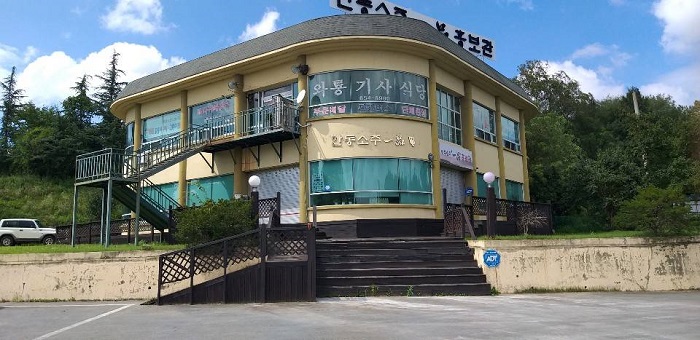
![An dong gotak Esanru [Korea Quality] / 안동고택 이상루 [한국관광 품질인증]](http://tong.visitkorea.or.kr/cms/resource/65/2579465_image2_1.jpg)
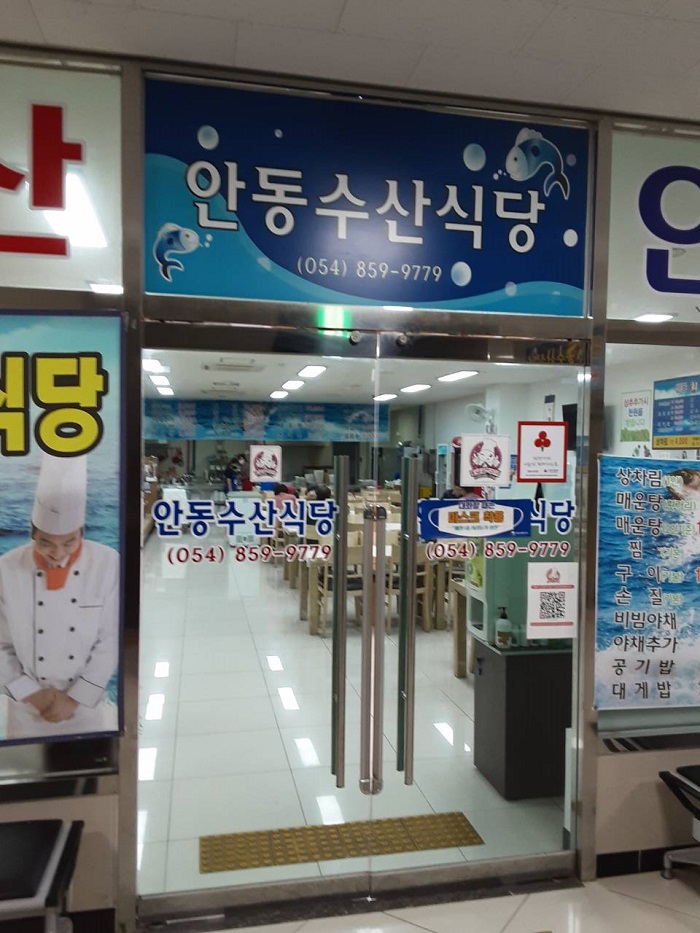
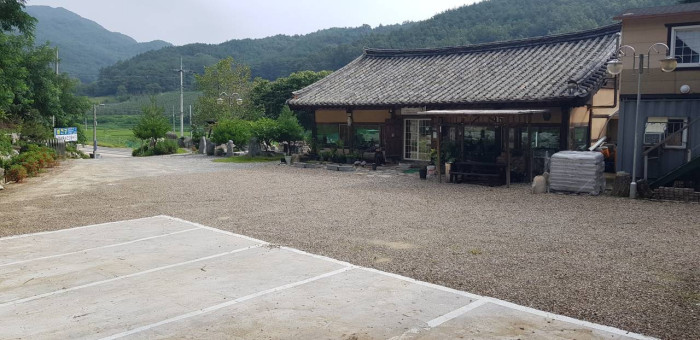

![Jukheon Traditional House[Korea Quality] / 죽헌고택 [한국관광 품질인증]](http://tong.visitkorea.or.kr/cms/resource/78/2636178_image2_1.jpeg)
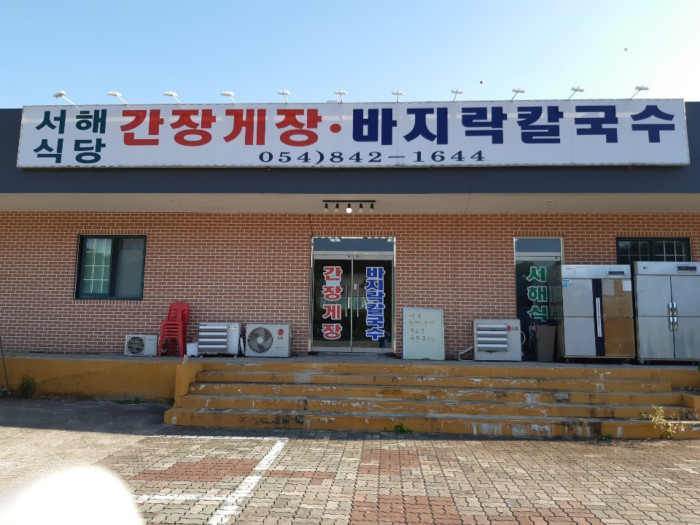
![Jeongjae Head House [Korea Quality] / 정재종택 [한국관광 품질인증]](http://tong.visitkorea.or.kr/cms/resource/96/2579496_image2_1.jpg)
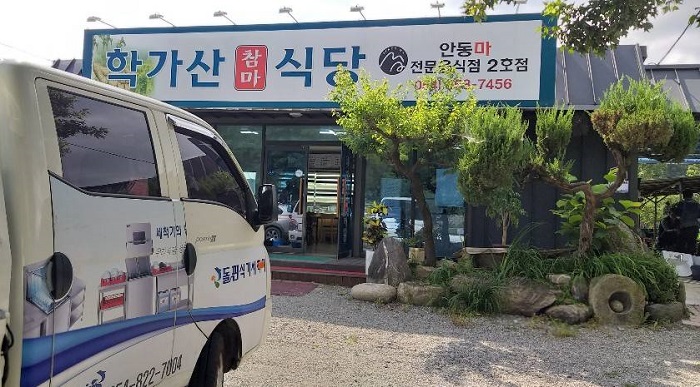
 Français
Français
 한국어
한국어 English
English 日本語
日本語 中文(简体)
中文(简体) Deutsch
Deutsch Español
Español Русский
Русский